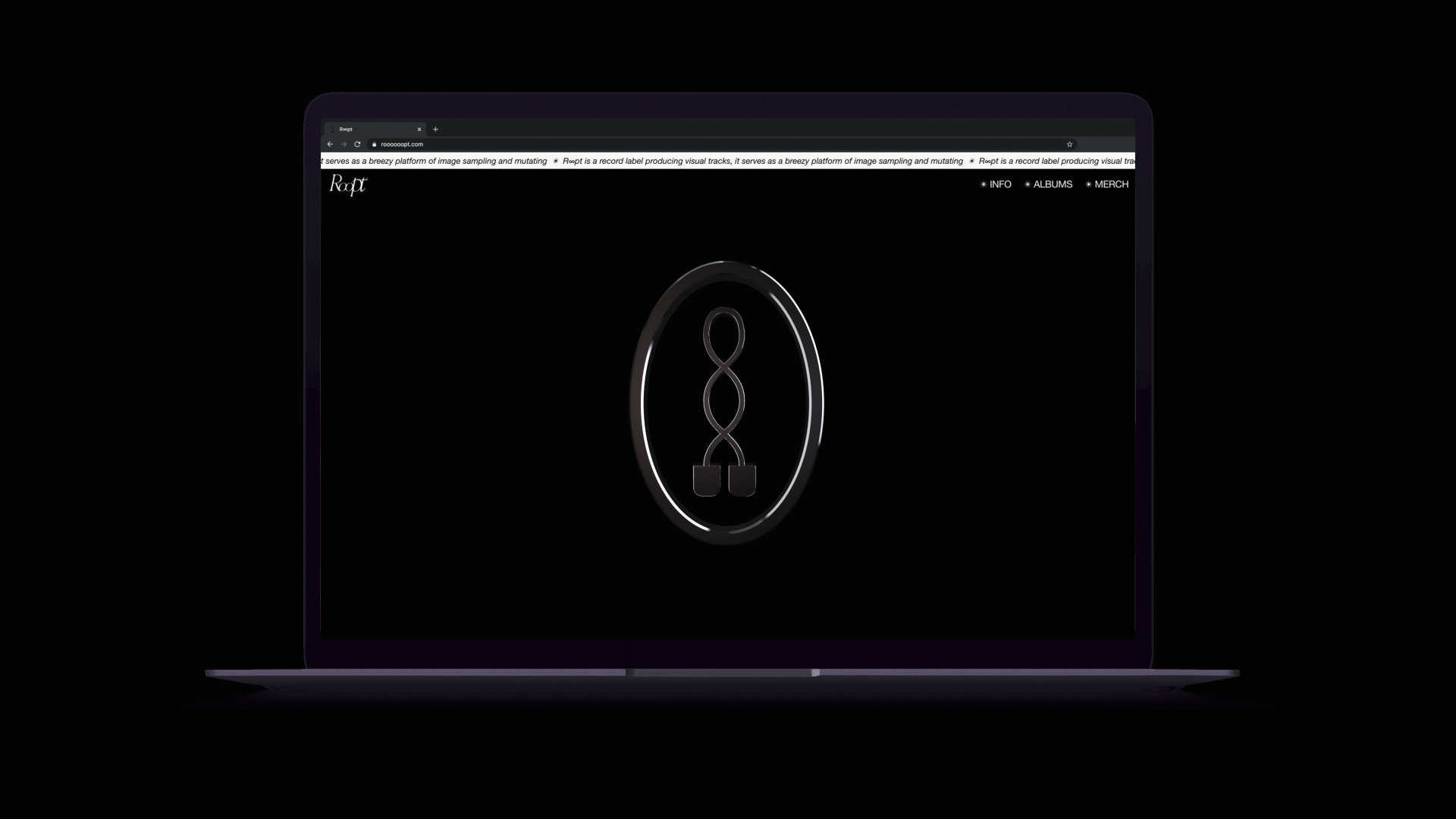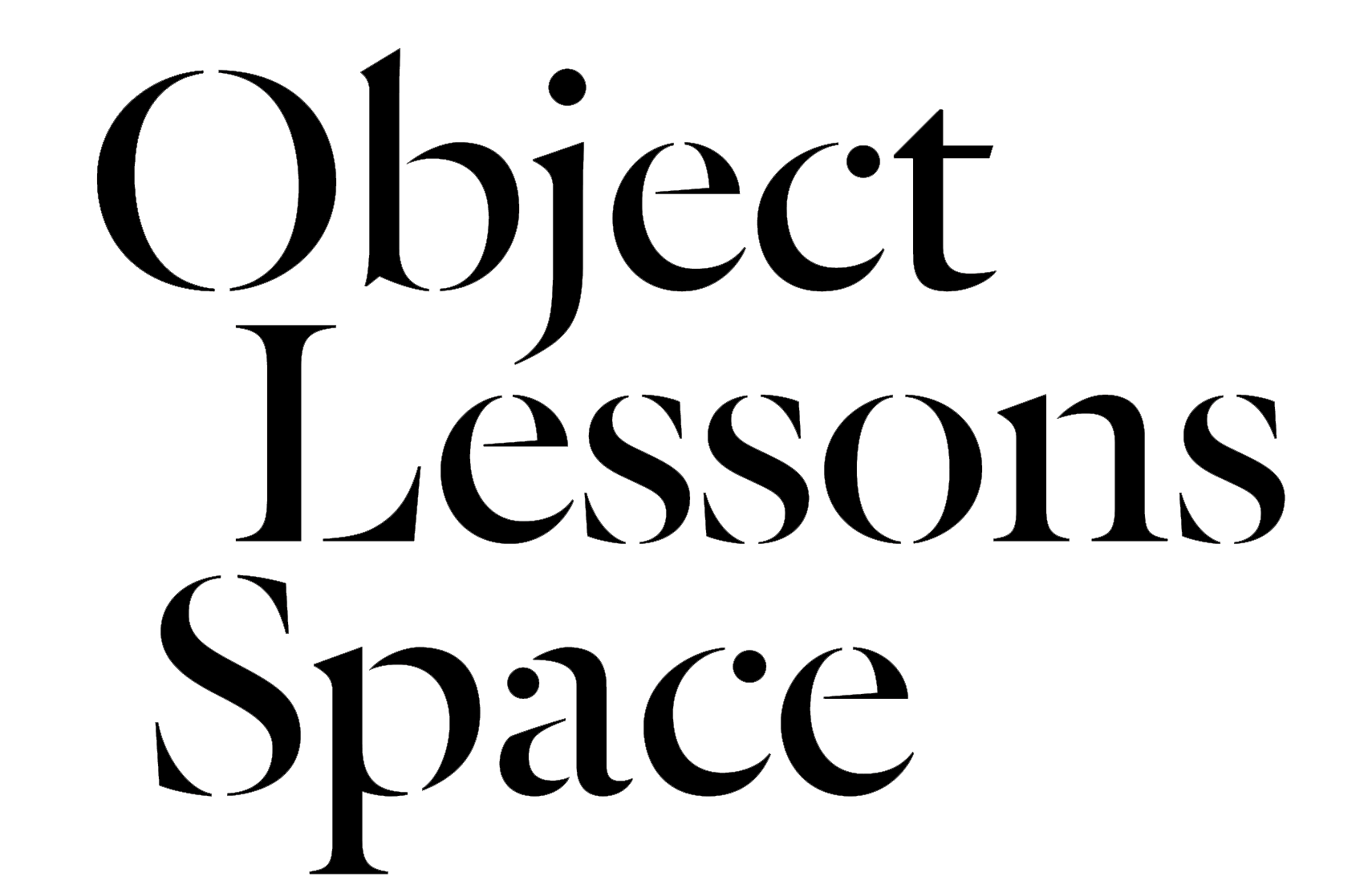Yeyoon Avis Ann explores and researches the possibility of re-contextualizing the idea of
production and the possibility of breezier production with good ventilation via
experimentations into the possible relations and hybridizations of heterogeneous elements such as
virtual and reality, text and music, visual and music, subjective thoughts and non-subjective
elements dissolve to meet as a messy constellation. Avis is interested in looking at this musically
or even composing a network for scattered fragments beyond localities.
It would be bold to assume that Avis’ practice can be defined in terms of fealty to a single medium. Working prolifically across installations, sound, and video, Avis' interests include artistic methodologies, computer thinking and modes of production. In her practice, Avis strives towards what she describes as “breeziness” – she simply works with whichever material that encapsulates these ideas best. Avis’ recent projects include working on a video for sound artist George Chua’s latest track, Neo-Punggol, and an exhibition at the National Gallery Singapore of her work, Passage Moist Beings.
It would be bold to assume that Avis’ practice can be defined in terms of fealty to a single medium. Working prolifically across installations, sound, and video, Avis' interests include artistic methodologies, computer thinking and modes of production. In her practice, Avis strives towards what she describes as “breeziness” – she simply works with whichever material that encapsulates these ideas best. Avis’ recent projects include working on a video for sound artist George Chua’s latest track, Neo-Punggol, and an exhibition at the National Gallery Singapore of her work, Passage Moist Beings.
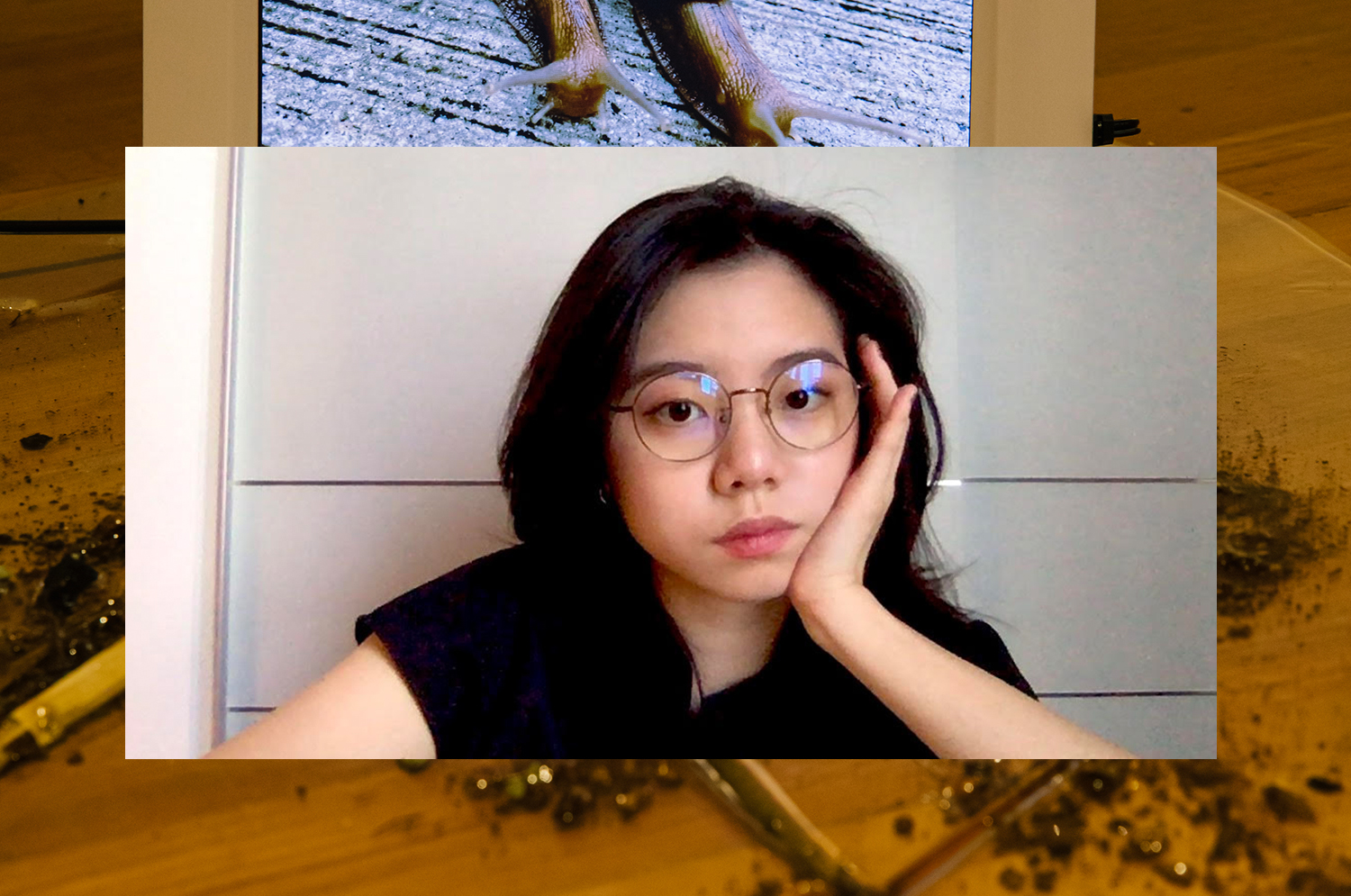

¹ Ring, Sing and Drink for Trespassing
Installation View at the Palais de Tokyo
Let’s begin by discussing your selection of artworks and theories. A lot of these works are things that
you’ve encountered through the Internet, and that you’ve then done your own personal research into.
Tell us about your thought process in putting this selection together, and what usually draws you in
when encountering a work of art — both online and offline.
I’m drawn to works that have an element of randomness to them, particularly when it comes to encounters in the digital realm or on the Internet. On the Internet, we often come into contact with images on an infinite scroll. We might click through to view one image then scroll past to another random image. For this interview, I picked out some works by the artist Laure Prouvost. It’s not conventional to centre an entire exhibition around an octopus, as per the French Pavilion at the Venice Biennale in 2019 (deep see blue surrounding you/vois ce bleu profond te fondre); or to reference the female body in exploring climate change, as per We Will Feed You, Cooling Fountain (For Global Warming). You wouldn’t really describe Prouvoust’s way of thinking as logical, but there is method and system to her working processes.
I think of randomness as being breezy, and I enjoy those interconnections between seemingly unrelated things. What I find the most compelling is the way in which artists or theoretical writers act in order to draw these connections in their works.

² A Thousand Plateaus: Capitalism and Schizophrenia, Gilles Deleuze and Félix Guattari
First published in 1980
You’ve picked out Gilles Deleuze and Félix Guattari’s concept of the rhizome for our conversation. This concept presents a shift towards multimodal and non-hierarchical ways of thinking, and the works Laure Prouvost presented at her exhibition Ring, Sing and Drink for Trespassing — which you picked out for our interview as well — is a brilliant example of how this can be manifested. Rhizomatic thinking presents us with the chance to complicate pre-existing structures, but still requires effective application. Personally, you’ve been thinking about this in relation to the way computers work. How has this theory complicated that thought process productively for you?
For me, the key point of rhizomatic philosophy is this movement away from vertical hierarchies in ways of thinking. It’s about understanding that there are different kinds of multiplicities existing on the same, horizontal plane, without one taking precedence over the other. This mode of thinking, in my perspective, shares a lot of similarities with the way computers see the world. To a computer, an elephant is not of any more significance or importance to a random object. I don’t think of the process of essentialising actual lives and ideas into mere data as being a bleak or gloomy thing. Instead, I think it excludes human subjectivity, in terms of how we classify living or non-living beings, from the equation. There is a humorous quality to this process. It allows for more breeziness in terms of how different things and varying elements can be connected together to form a non-hierarchical narrative.
With regard to your question on productive complications, personally I don’t really seek out the concept of complication in my practice. I’d much rather use complexity differently, and this could be through the persuasive or funky delivery of complexity. The world is complex enough, and I don’t intend to further complicate things with my art.
³ Outdoor Blu, Yeyoon Avis Ann
2019, Installation View at Supernormal Space
⁴ Outdoor Blu, Yeyoon Avis Ann
2019, Installation View at Supernormal Space
2019, Installation View at Supernormal Space
⁴ Outdoor Blu, Yeyoon Avis Ann
2019, Installation View at Supernormal Space
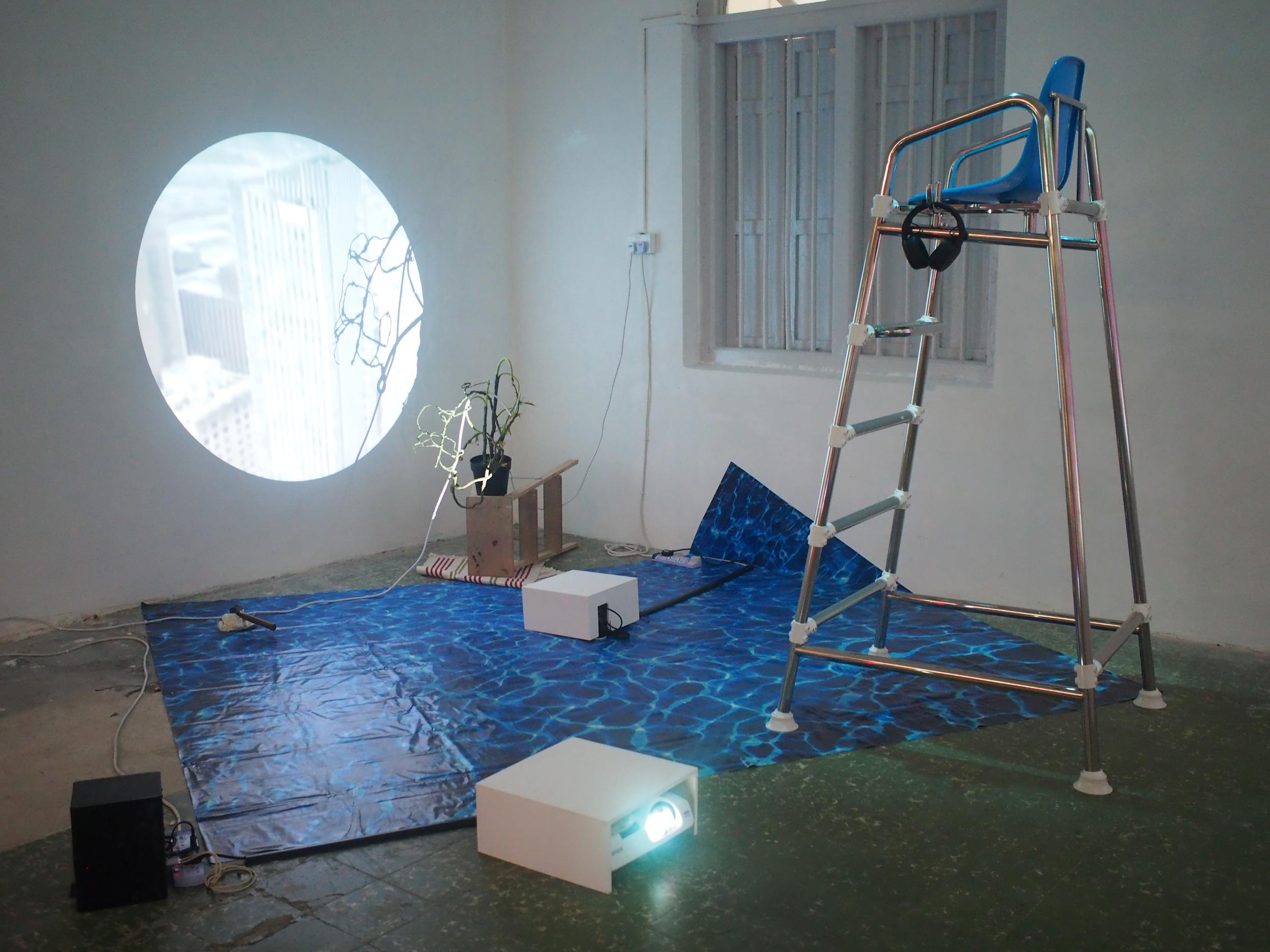
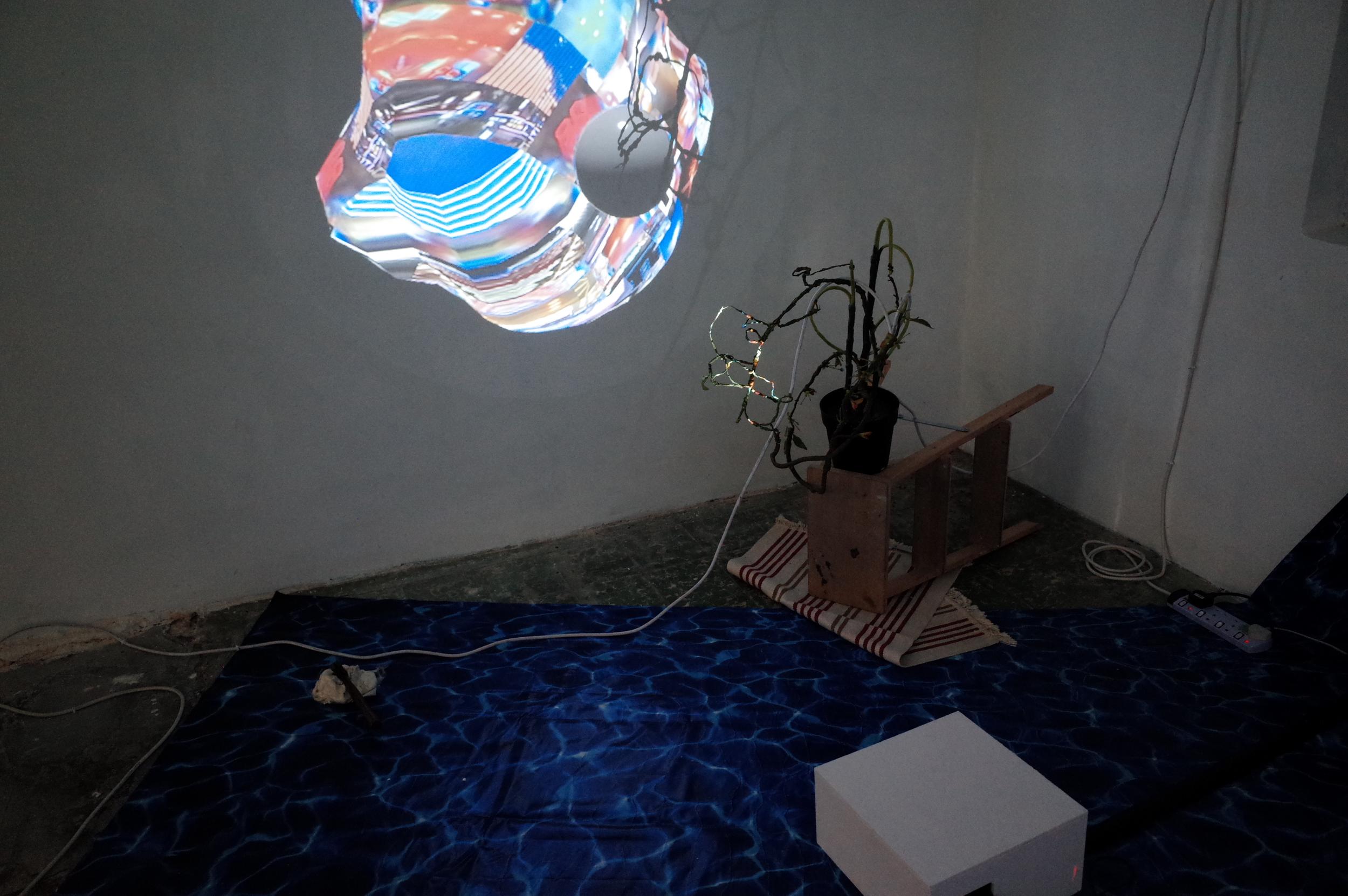
This notion of randomness has come up quite a bit in your answers. What does randomness mean to you, and are there particular ways of articulating randomness that you’re interested in?
One example of randomness is that moment you realise that two things that have been placed
side by side when they don’t actually share an obvious, pre-existing connection. This could relate to anything,
includingmy previous example of the elephant and a random object. The Internet is a great place to witness these things happening. You can be reading about AI taking over certain industries one one page, and watching cute cat videos on the next. Sometimes, this total randomness can even create humour. The reason why I enjoy randomness is because I often think about the next action that follows. I can see myself connecting these two seemingly unrelated images together.
It’s always intriguing to see things that you don't expect in the same space being placed side by side. The example of the Explore page on Instagram is interesting though, because it’s not completely random either. There’s always an algorithm working behind the scenes.
I don't think that randomness in its pure form can exist. We live in an incredibly architectural society where everything is calculated. We work within man-made systems, so pure randomness is not possible. Having said that, I approach randomness and think of it as a perspective. An encounter might not have been random in a technical sense, but if it felt random to you, then maybe it is.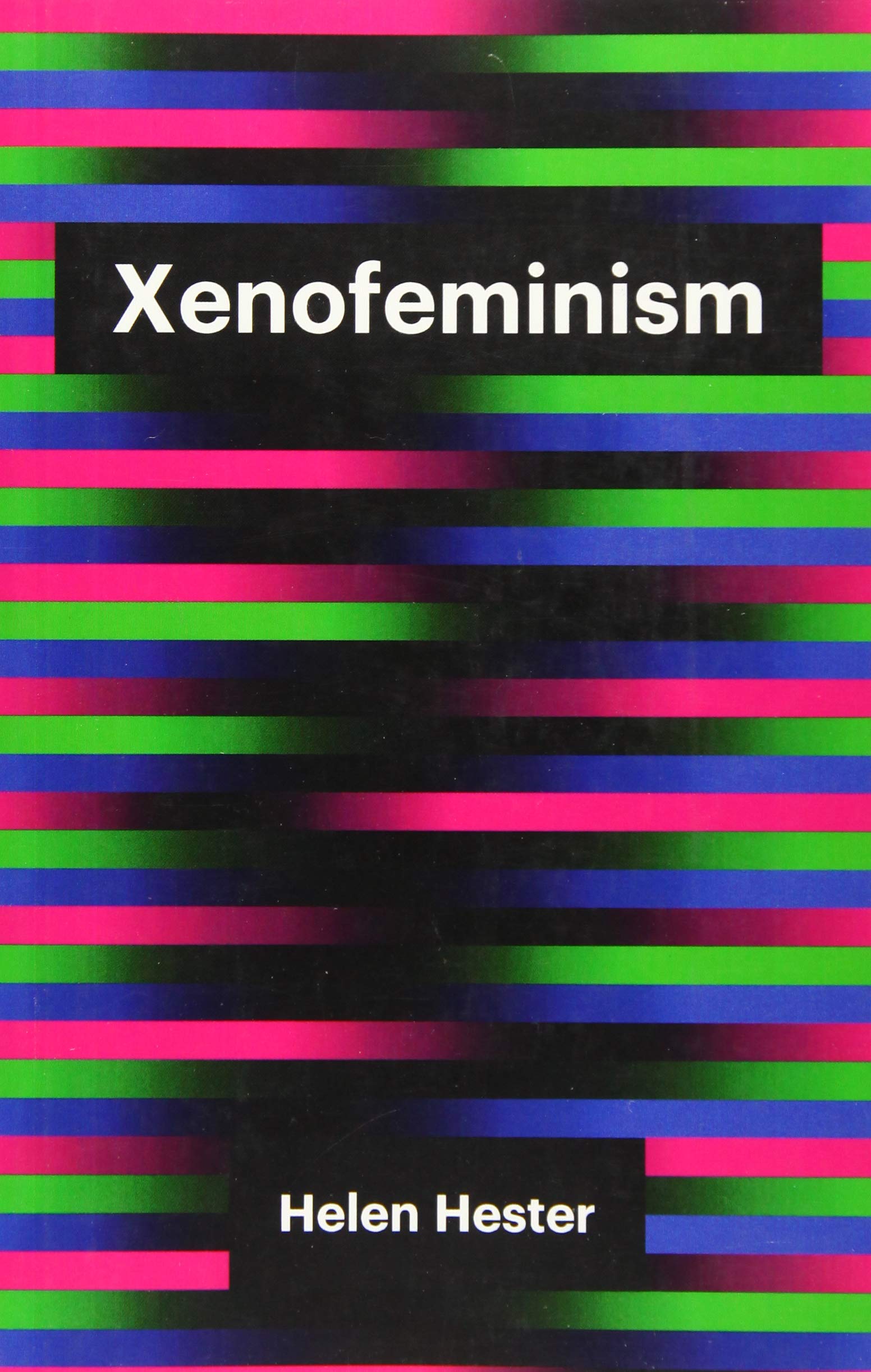
⁵ Xenofeminism, Helen Hester
2018
On that note of thinking about and through cyberspace, let’s move to Helen Hester’s, a founding member of the collective Laboria Cuboniks, Xenofeminism. In the book, Hester proclaims that “Xenofeminism seeks to be a mutable architecture that, like open source software, remains available for perpetual modification and enhancement.” There are hints of this embedded into how you work as a mixed media artist across sound, fiction, installation and more. How has this text coloured how you work across the virtual and material, and how you navigate the relationship between the two?
I approach sound, visual, virtual and physical materials all on the same plane, as per rhizomatic
theory, without any sort of hierarchy. It could be said that I approach these mediums as fragments. However, the point isn’t to focus on the fragments themselves or the notes themselves. I tend
to take a lot of care in reassembling these multiplicities into a persuasive narrative that binds these
fragments together.Xenofeminism sharpened my thinking with regard to anti-naturalism, which embraces artificiality, science and technology as a means of reengineering our world. In order to achieve that goal, the book writes about the necessity of a structure that is open and alterable. To be honest, I didn’t find the concept of this open structure as compelling as the book’s ideas regarding instrumentalism. It’s not about upsetting naturalism in favour of anti-naturalism.
This brings me back to my practice again, which is concerned with collaging. I'm simply producing a collage by composing fragments in a way that these mediums can be effective. In my practice, my focus is on the production process itself, and not the final artwork or the produced output. I find the development of relations through interconnections, and how these relations are materialised, more interesting than a final end product.
In my practice, my focus is on the production process itself, and not the final artwork or the produced output.
⁶ Passage Moist Beings, Yeyoon Avis Ann
2020, Installation View at the National Gallery Singapore
Credit: Singapore Art Museum
⁷ Passage Moist Beings, Yeyoon Avis Ann
2020, Installation View at the National Gallery Singapore
Credit: Singapore Art Museum
2020, Installation View at the National Gallery Singapore
Credit: Singapore Art Museum
⁷ Passage Moist Beings, Yeyoon Avis Ann
2020, Installation View at the National Gallery Singapore
Credit: Singapore Art Museum


Another recent project you’ve worked on is a collaborative project with sound artist George Chua. In a video you produced for his track Neo Punggol, images of protests are seen alongside screen recordings of video games and aerial drone shots of perfectly manicured housing flats. Tell us about how you approached this interface between visuals and sound, and how important the use of juxtaposition or clashing elements is in defining your approach.
Ujikaji Records approached me with this project, and when I first heard the track, I was struck by how violent it was. The beat was short, static and temperamental. It definitely wasn’t giving me romantic or chill vibes. When I work with music, and I sometimes make music myself as well, I usually make the music first. The visual then comes afterwards. To me, music is more abstract. I can always divert the conceptual to a later part of the process. Usually, I try to understand or locate myself within the music or what the piece is about. My interpretation of George’s track might be quite subjective, but I can at least be genuine about my interpretation of it.
When I was working on the piece, the first word that came to my mind was “violence”. Today, we are surrounded by a lot of violence. This ranges from the video games we grew up playing to watching the news covering political protests, terrorist attacks, street fires, explosions and more. I scraped a lot of footage of these violent episodes from the Internet, and this process was incredibly random. I could be searching for political protests one day, and videos of fight recordings of Street Fighter the next.
With these materials, I could see the multiplicities in them again. I could see certain tensions being formed. Some of the clips I used in the video work were incredibly oppressive — the flow of power trickles down from the top. Yet, power can well up from the bottom as well, and this is seen in some of the other clips included. I am interested in the process of composing these elements into something more orchestral. Video-editing is incredibly musical. It needs a conductor for the whole orchestra. It’s highly calculated, yet it is poetic. You can’t let things just happen by free will, but I think the beauty of this juxtaposition is in the fact that I’m using multiple elements at the same time. I can be calculative about this and orchestrate the flow of things.
When I work with music, and I sometimes make music myself as well, I usually make the music first. The visual then comes afterwards.
⁸ Neo-Punggol, George Chua
2020, directed by Yeyoon Avis Ann
2020, directed by Yeyoon Avis Ann
In talking about your process, you mentioned music-making coming before the visual for you. Would you describe music or sound as being more intuitive for you?
I have a very crooked vision when it comes to music. I know it's very capitalistic to be thinking about the music industry by way of major record labels. But when I listen to music, I personally think of it as being
unpolluted as compared to how I’d approach the fine arts. With music, there is an natural tendency towards feelings or the emotive. This is in comparison to having to verbalise or contextualise all of the ideas I have for my work. Having said that, I try not to think about the
differences between the fine art and music industry too much. I usually just occupy a space between them.
You’ve also described your method as drawing from abstract jazz composition. Tell us about your first encounters with jazz music. Are there specific aspects of this manner of jazz composition that you have in mind when using it as a metaphor in describing your artistic methodologies?
For a long time, I thought jazz was music for old people. It wasn’t until I listened to a live jazz band perform that I realised it was all about improvisation. I read an essay by Min Oh that discusses a work by composer Julia Wolfe titled Lick. There’s an excerpt from the essay that I really like, and I quote:
The fragments continuously intensify and sometimes revert back into fragments, or coexist with remaining fragments as they transform. As the lapsed time, frequency, and range accumulates, the points transform into vectors, the vectors into planes, and the planes back into points. As these points, vectors, and planes intersect with each other, they also overturn one another and expand.
The fact that fragments can collide is equally as interesting as how colliding fragments are designed to become a composition. With jazz, musical collision is intricately calculated and planned. Musicians and composers have been engaged in trying and testing out different models. Based on this trial and error, we are now listening to the most persuasive composition that can be deliverered. The idea of having multiple fragments colliding into one another is extremely fluid and open, but it was this artistic agency in composing a flow that led me towards thinking about the way we work as artists, designers or producers. We too can design situations where multiple fragments are in constant collision with one another. We can offer a stance that approaches this breezily.
The idea of having multiple fragments colliding into one another is extremely fluid and open, but it was this artistic agency in composing a flow that led me towards thinking about the way we work as artists, designers or producers. We too can design situations where multiple fragments are in constant collision with one another.
Tell us about your project, R∞pt, which draws from the production model of music labels to create visual tracks. Why were you drawn to the way in which music labels function, and were there particular experimental strategies of theirs you wanted to interrogate with this project?
I actually think that music labels work in very similar ways to art galleries. Music labels showcase their artists, promote them, and their aim is to get the public to hear their songs. It’s very similar to the work an art gallery does. Thanks to the era of digital marketing, the divide between regular ecommerce and an art gallery is becoming less distinct.With R∞pt, it can be said that I hosted a digital showcase as a curator — but the concept draws from a different working model. I wasn’t looking to implement the functions or strategies of a music label entirely. Instead, I came at this with a fine arts perspective. I wanted to see if art production or how we trade art can mutate when it comes into contact with another operational method, such as that of the music label or the wider music industry. In doing so, can it mutate into something more?
I’m constantly thinking about how art production can be mutated by other elements. It could draw from the design industry, the technology industry, or the gaming industry. The default process we have — whereby there is an artist, a curator and an exhibition — feels unsustainable to me at times. It’s a worn out process. One creates, one shows, and then what? The cycle repeats. I’m still thinking about formulating a better or more sustainable model for artists, and this project is an example of me trying.
⁹ حب / love in hires (from R∞pt), Yeyoon Avis Ann
2020
¹⁰ Mutated Romance (from R∞pt), Yeyoon Avis Ann
2020
¹¹ Drunken Binoculars (from R∞pt), Yeyoon Avis Ann
2020
2020
¹⁰ Mutated Romance (from R∞pt), Yeyoon Avis Ann
2020
¹¹ Drunken Binoculars (from R∞pt), Yeyoon Avis Ann
2020



Throughout our conversation, you’ve mentioned the idea of “breeziness” or working towards a “breezier mode of artistic production” a couple of times. To ventilate a network implies that it was stuffy and closed off in the first place. In describing a vision, one might feel inclined towards using a visual metaphor. In this case, you’ve gravitated towards a metaphor that is embodied and evocative. Tell us about your experiences in art making, both as an art student and now as a practising artist, and why you’ve been drawn towards the emotive metaphor of a breeze.
On a fundamental level, I’ve always found myself drawn by Eastern philosophy, especially Taoism. I can see so many connections between Taoism, contemporary art, and how we understand digital platforms. It’s not really about defining a single, absolute quality. Rather, it’s about thinking through these interconnections between things. When I was a student, I spent a lot of time making things. I don’t really know why, but it was quite a toxic experience for me. I hadn’t quite wrapped my head around concepts of production and labour then, and I was just following the example set by other artists or my peers. I wrote an entire thesis that opposed the working methods of conventional artists. There are artists who are essentially propped up by craftspeople or assistants who execute their ideas. This is common with big names in the art scene, or artists that are well established. To me, this kind of production almost seems venture capitalist.
With technological developments, our ideas of labour have shifted dramatically. With the emergence of AI, we have to cultivate a deeper understanding of humanity with posthumanist thinking. Climate change also suggests that we need to move beyond a vision that is centered around the human species. Given these changes, artistic labour should be intermingled with other forms of labour. I don’t really see the future of art as being confined to physical spaces such as art galleries, museums and artist studios. This is how my vision for a breezier mode of production would work. It's more of a perspective, a lifestyle, or even a simple philosophy.
Artistic labour should be intermingled with other forms of labour. I don’t really see the future of art as being confined to physical spaces such as art galleries, museums and artist studios.
Although we’ve been speaking to ventilation in the context of artistic production, this can be applied to artistic consumption as well. Access points to the arts have been largely democratised recently, as events that would usually be held within physical spaces are now migrating online. As someone who’s incredibly comfortable with working virtually and materially, do you think that this presents us with a faint opportunity to shift towards a well ventilated network of artistic consumption as well?
I have very mixed feelings about this. On the one hand, I can see this pan out really well. Yet on the other hand, I also am rather pessimistic. I’ll start with the positive first. With everything going digital, it is true that there is now a diversity in the sort of works that have been gaining visibility. I’ve been so happy to see more opportunities coming the way of my talented artist friends. This momentum is really working to shine the spotlight on younger or emerging artists. There is a real versatility to the online space. We’re used to seeing or encountering art in physical spaces, but there are so many digital platforms and tools that we can use to our benefit as well. We just might not have known about them before. The positive side of things is, as you mentioned, that encounters have been relatively democratised.At the same time, I’m cautious about these developments. Going digital doesn’t equate to a complete democratisation of everything. The art market seems to be moving towards the same direction that industries such as digital marketing have gone. Art galleries use social media platforms such as Instagram or Facebook, but many of them have a subscription model in place as well where viewers can pay a fee to view works online. The rich — or whoever sits at the top of this digital hegemony — will have access to more resources than everyone else, and the same social structures will be replicated online. I don’t think I have a direct answer for this, but I hope to continue thinking about and examining these structures. As our artistic ecosystems moving into the digital, I think that there is a hazard that we might begin borrowing from the tactics or tricks of capitalist models without even realising it. Falling into this trap without realising it might be more dangerous than knowingly falling for its tricks.
¹² R∞pt, Yeyoon Avis Ann
2020
2020
